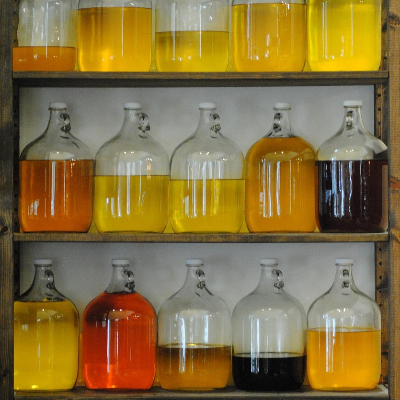Menu
-
-
F.A.Q
- How to identify genuine agarwood chip, natural or cultivated
- How to identify oil injection / absorption fake agarwood beads
- How to know if there are more than one oil in your oil
- How to make your wood bracelet or mala darker
- How to tell if an Agarwood bead sinks WITHOUT sinking it under water?
- How does back flow incense work and how do you burn it?
- Where to start if you don't know what agarwood is ?
- Why are you losing money if you buy seeds and plants?
- Which agarwood incense should I choose?
- Frequently Asked Questions
- Agarwood Related Articles
- Shipping
-
SHOP - Agarwood
-
SHOP - Other Fragrant Wood
-
SHOP - Incense Holder and Burner
-
- FREE Oud Oil guide
- Testimonials
- "Why did you buy this?"
- Contact us
- About Us
- +61430284329
- Login
-
English


Why there is no MLM Agarwood oil?
May 26, 2016 4 min read
The reason why there is no Multi-Level Marketing (MLM) Agarwood oil, unlike other essential oils, stems from several key factors, primarily revolving around cost, yield, and the intricate process involved in producing high-quality Agarwood oil.
-
High Cost:
- Production Expenses: The production of Agarwood oil is exceptionally costly. The process of cultivating and harvesting the infected Agarwood, which is essential for producing the oil, requires significant time and resources. The infection process alone can take years, and not all Agarwood trees will yield the high-quality resin necessary for premium oil.
- Scarcity and Demand: Agarwood is a rare and highly sought-after resource. Wild Agarwood, which produces the highest quality oil, is increasingly scarce due to overharvesting and habitat destruction. This scarcity drives up the cost of the raw materials, making the final product extremely expensive.
-
Low Yield:
- Extraction Yield: The yield of Agarwood oil is very low compared to other essential oils. For example, while oils like Sandalwood and Cedarwood may have a yield of around 4.5%, the yield for Agarwood oil is approximately 0.001%. This means that one tonne of infected Agarwood wood produces only about one litre of oil. The extremely low yield further escalates the cost of the oil.
- Quality Control: High-quality Agarwood oil depends on several factors, including the quality of the infected wood, the distillation equipment, and the technique used. Ensuring these high standards consistently adds to the complexity and cost of production.
-
Complex and Lengthy Production Process:
- Infection Process: Creating high-quality Agarwood oil involves a meticulous infection process where the Aquilaria trees are intentionally wounded and infected with a specific type of mold. This process can take up to two years to produce the resin that forms Agarwood. Only the infected parts of the wood can be used, which significantly limits the amount of usable material.
- Distillation Technique: The distillation of Agarwood oil is a delicate and complex process that requires skilled artisans. Different distillers may have proprietary techniques that they guard closely, and mastery in this craft significantly impacts the quality and characteristics of the final product.
-
Regulation and Conservation:
- Endangered Species: Many species of Aquilaria trees, the source of Agarwood, are listed as endangered. This means that their trade is regulated under CITES (Convention on International Trade in Endangered Species of Wild Fauna and Flora). These regulations aim to ensure sustainable use but also add another layer of cost and complexity to the production and trade of Agarwood oil.
- Environmental Impact: Sustainable cultivation practices are essential to prevent the extinction of Aquilaria species. These practices often involve additional costs and long-term commitments, making it difficult for MLM companies to operate profitably within this niche.
-
Market Suitability:
- MLM Business Model: MLM companies thrive on high-volume, low-cost products that can be easily marketed and sold to a wide audience. The high cost and low availability of Agarwood oil do not align with this business model. MLM companies prefer products that can be produced and sold in large quantities at lower prices, ensuring a steady income stream for their distributors.
The absence of Agarwood oil in the MLM market is due to the high cost of production, the low yield of oil, the intricate and lengthy process required to produce high-quality oil, stringent regulations, and the misalignment with the MLM business model. Agarwood oil is a luxury product that requires significant investment and expertise, making it unsuitable for the MLM approach which focuses on mass-market appeal and affordability.
Let's elaborate the above point furhters.
The Intricate World of Agarwood Oil: Essential vs CO2 Extracted

Source: Provided by my trade partner
Agarwood, also known as Oud, is a fascinating and complex oil, cherished for its unique fragrance and rarity. Generally, there are two primary types of Agarwood oil: essential oil and CO2 extracted Oud oil. As explained above, I will show you in details that MLM (multi-level marketing) essential oil companies rarely offer Oud oil The main reason is simple—its cost is prohibitively high for such business models.
Understanding the Yield
To grasp the true value of Agarwood oil, let us first understand its yield. For instance, the yield for Sandalwood and Cedarwood oils is around 4.5%. In stark contrast, cultivated Agarwood oil has a yield of approximately 0.001, meaning that one tonne of wood produces only about one litre of oil. Crucially, this wood must be infected, not just any Agarwood.
The Process of Infection
Creating quality Agarwood oil involves a meticulous process. It takes around two years of infection to generate the precious resin. Have you ever noticed that Agarwood forms around wounds, such as drilled holes? This infection process is critical for developing the resin that makes Agarwood oil so valuable. And this process takes years to complete.


(Images credit to Mr Sha Sultan, Junny, and Dee)
The Making of Good Grade Oud Oil
Producing high-quality Oud oil involves several key factors:
-
Good Material: The more resin, the better the material. Wild Oud typically offers a superior scent profile compared to cultivated Oud, primarily due to the age of the infection. Unlike other essential oils, which generally provide a single scent, Oud oil boasts multiple layers of fragrance. It evolves over time, creating a mysterious and enjoyable olfactory experience.
-
Good Distillation Equipment: Quality equipment is crucial in extracting the best essence from the resin.
-
Good Technique: The distillation technique varies between distillers and is often a closely guarded secret. Mastery in distillation significantly affects the quality of the final product.
Point 1 and 3 are critical, each plantation will have its specialty, the qualitfy from each plantation will have different aromas. MLM essential oil companies usually do not like this as it is hard for them to control and market.
The Lifecycle of Aquilaria Trees
Aquilaria trees, the source of Agarwood, need to be robust before inoculation, typically between 10 to 12 years old. If inoculated too early, the trees may die immaturely. Following inoculation, an additional two years are required before the trees can be harvested.

Conservation and Regulation
In the wild, Aquilaria species are listed as endangered. Trading Agarwood requires a CITES (Convention on International Trade in Endangered Species of Wild Fauna and Flora) certificate, adding another layer of cost per import and export. This regulation ensures the sustainable use of this precious resource.
Leave a comment
Comments will be approved before showing up.
Also in News

What is Tasbih? The Deep Meaning of Subhan Allah and the Role of Prayer Beads
November 09, 2025 4 min read

